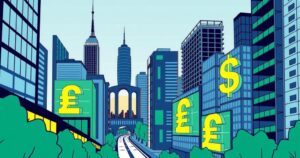Brazil Achieves 3.4 Percent Economic Growth in 2024

Brazil’s GDP grew by 3.4 percent in 2024, driven by strong household spending and increases in industry and services. Agriculture faced a decline, while exports and imports also showed varying trends. Officials project continued growth into 2025, with a focus on tackling inflation and improving food prices.
In 2024, Brazil experienced a notable economic growth of 3.4 percent, according to a report by the Brazilian Institute of Geography and Statistics (IBGE). This growth was significantly attributed to robust household spending, which increased by 4.8 percent year-on-year. Additionally, both the industrial sector and services saw expansions of 3.3 percent and 3.7 percent, respectively, further contributing to the nation’s GDP growth.
Conversely, agriculture faced challenges, contracting by 3.2 percent due to unfavorable harvest conditions. On the trade front, exports rose by 2.9 percent, while imports escalated by 14.7 percent, primarily fueled by heightened demand for chemicals, machinery, and motor vehicles.
Brazilian President Luiz Inacio Lula da Silva expressed optimism regarding the economic growth, designating 2025 as “the year of the harvest.” He remarked, “A growing GDP means more jobs and more money in the hands of Brazilians,” reflecting his administration’s commitment to enhancing economic conditions.
Minister of Planning and Budget Simone Tebet pointed out that Brazil’s GDP per capita reached 55,247.45 reais (approximately 9,558.4 U.S. dollars), marking a 3.0 percent increase. She underscored the importance of addressing inflation to reduce food prices, a critical concern for Brazilian households.
Looking ahead, financial markets predict a GDP growth of 2.01 percent for Brazil in 2025, whereas government forecasts indicate a slightly higher growth rate of 2.3 percent. This outlook suggests ongoing economic development and challenges as the nation seeks to stabilize and improve its economic landscape.
Brazil’s economic landscape in 2024 was characterized by a 3.4 percent growth, propelled by strong household spending and expansion in industrial and service sectors. Despite challenges in agriculture, the government’s forecasts for future growth remain optimistic. Authorities emphasize the need to address inflation to ensure sustainable economic benefits for the population.
Original Source: ana.ir








